Bram Stoker’s Dracula
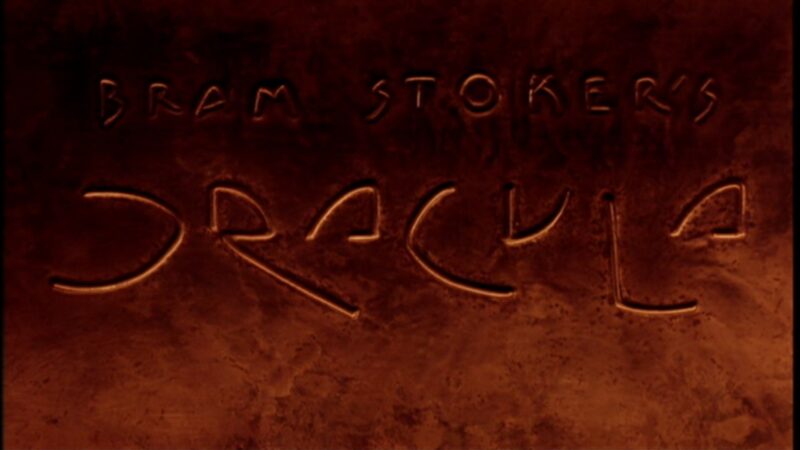
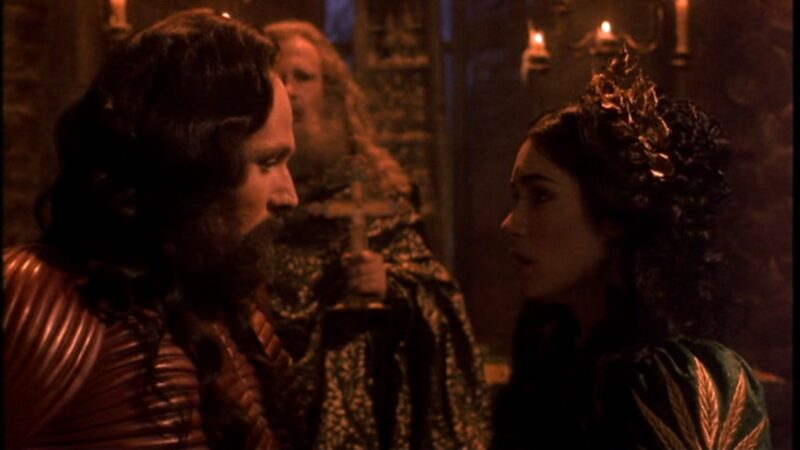
Francis Ford Coppola’s Dracula is not only one of the preeminent film renditions of the novel by Bram Stoker but, a sensual visual experience as well. Coppola’s introduction of a love story—as it is suggested that Mina is the reincarnation of Vlad’s only true love, Elisabeta—saturates Stoker’s narrative with a passionate sexuality coupled with a sensual tragic romanticism that permeates the film and yields a more potent motive for Vlad’s departure of Transylvania other than his initial intent to find new blood and spread the undead curse.
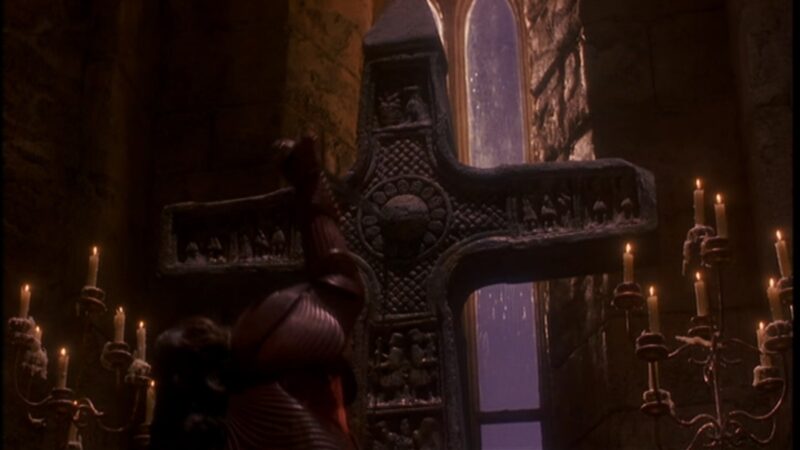
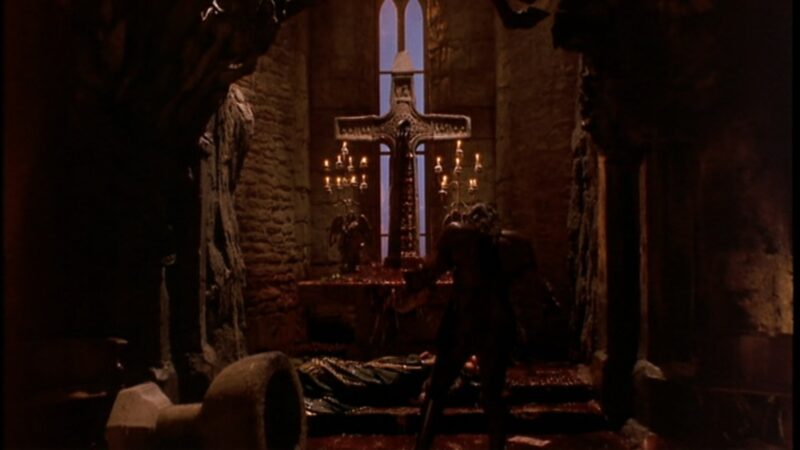
Elisabeta’s suicide by plunging from the castle tower in despair of Vlad’s reputed death becomes the impetus for Vlad’s renunciation of God and his subsequent drinking of the blood issuing from the stone cross impaled with his sword, thus becoming the despotic immortal vampire—tortured and bereft of love—and a sublime Byronic villain.
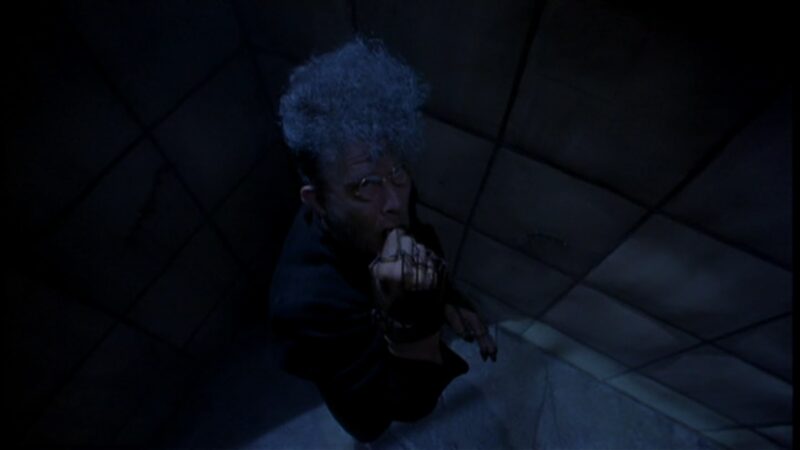
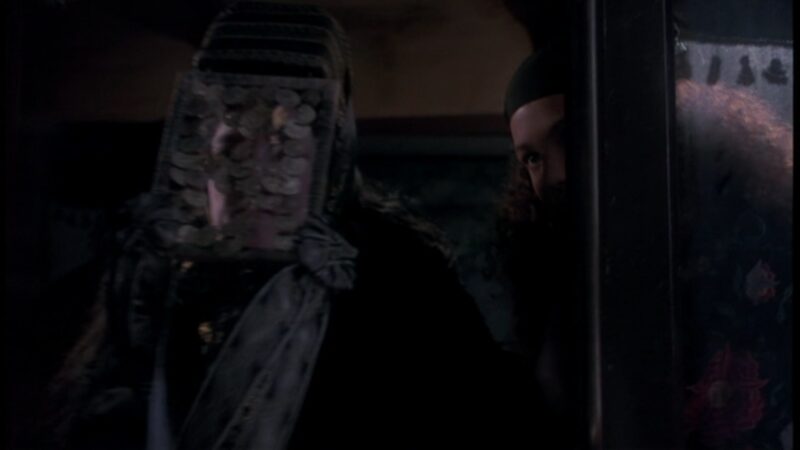
The various aberrant characters, such as the veiled personage in the stagecoach and its driver, as well as others scattered throughout the film, heighten its aura of otherworldliness and its sinister preternatural atmosphere.
As for Dracula—along with his appearance, speech and mannerisms—watching his shadow acting independently ‘shadows’ and reveals his occulted intentions and unearthly demonic nature.




The bright, carefree, and sexually innocent world of Mina’s friend, Lucy, is in direct disparity with the major mise en scène of Coppola’s vision however, this world too will become infected with dread and crepuscular terror. This ideal of ‘civilised’ complacency is again contrasted with the verminous cells of the bleak stone-walled insane asylum, its turbidly mad residents, and head-caged guards.

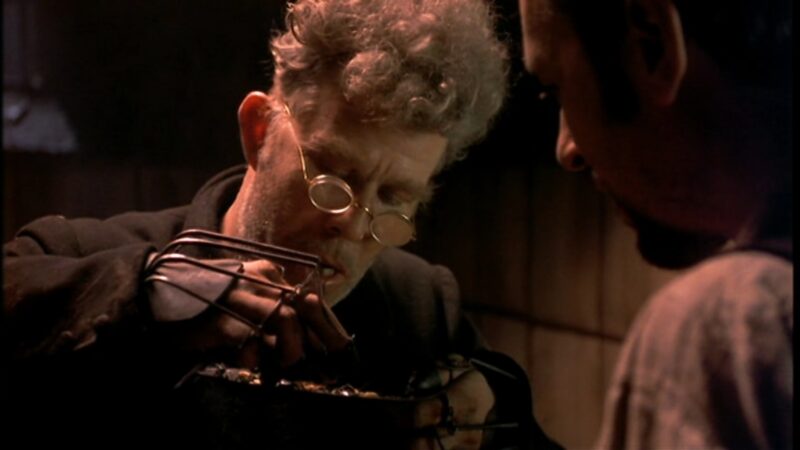
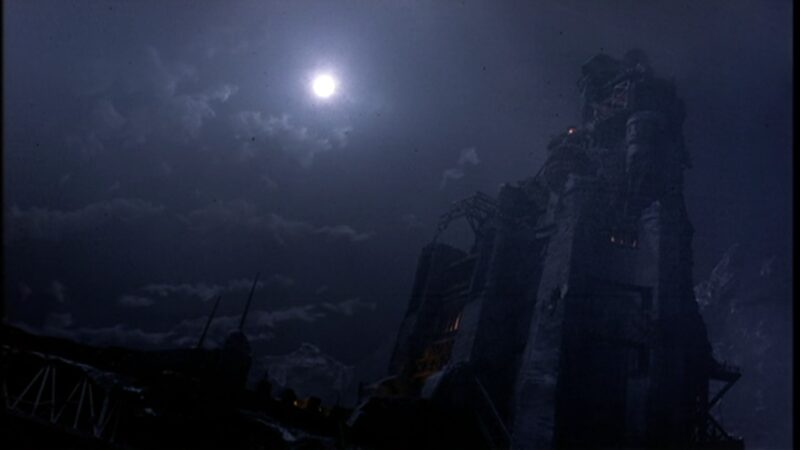
You cannot get more Gothic than this depiction of Dracula’s castle. These feral crumbling ruins of his once protective fortress reflect the deteriorated state of Dracula’s mind and body—the iniquitous abomination he has become—and the expulsion of his soul as a result of his disavowal and defiance of God.





Saturated with graphic carnal licentiousness, bestial depravity and explicit visual opulence, Coppola’s Dracula is a descent into insanity, lust, and death where the denizens of the inscrutable Unknown penetrate the conscious senses to wildly impregnate them with a perverse sublime terror, cursing and corruptinng their thin frail moralities and dogmas with ravenous sensuous fevers, savaging them with ruthless transgressions so that they will genuflect and prostrate their sanity before their own deepest abominations with body, soul, mind, and psyche.
In Dracula, Coppola has served us our own deepest fears of mortality, mayhem, and madness in a vision of vivid Baroque barbarity, sadistic serenity, and manic Machiavellian metaphysical masochism.
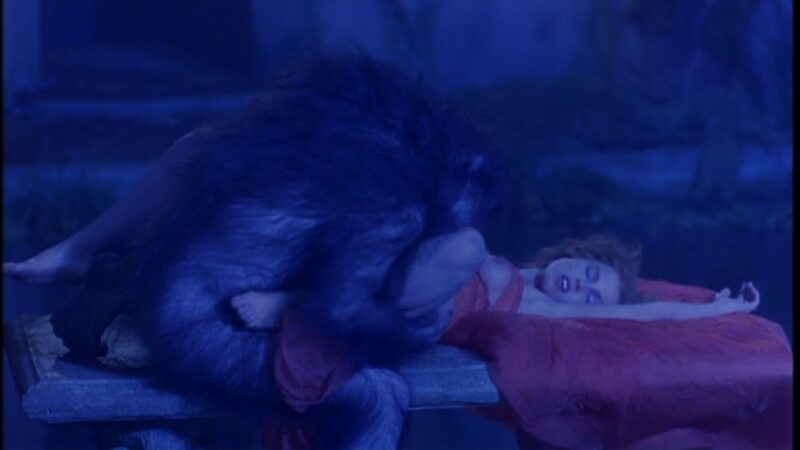
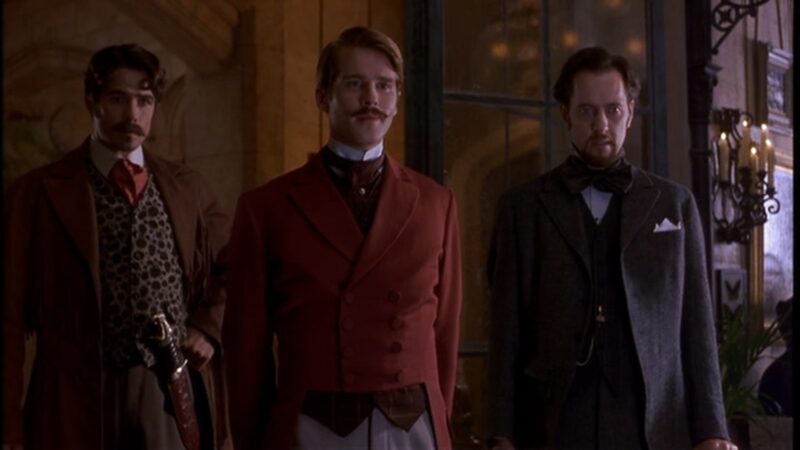

Here Vlad’s visceral nature emerges and conflicts with the eternal beatific love for Elisabeta whom he assumes is reincarnated as Mina. As Vlad the Impaler, Dracula’s nature is consummate with this former cold-blooded cruelty. His first visceral reaction to Mina’s helplessness is for her blood and not her heart. He battles, resisting its intrinsic savagery. Mina then flees him into the confusion brought about by the appearance of the white wolf which, in the melee, stands snarling to confront her.
Dracula summons the creature and introduces Mina to it to allay her fear of the beast. This leads to an intimate and intense hedonic encounter between them both depicted by the thick voluptuous fur of the wolf and the interplay of their gloved hands. “He likes you.” Dracula says softly, “There is much to be learned from beasts.” This scene, with a solo cello drifting in the background, is possibly the most sensuously and sexually suggestive segment of the entire film.
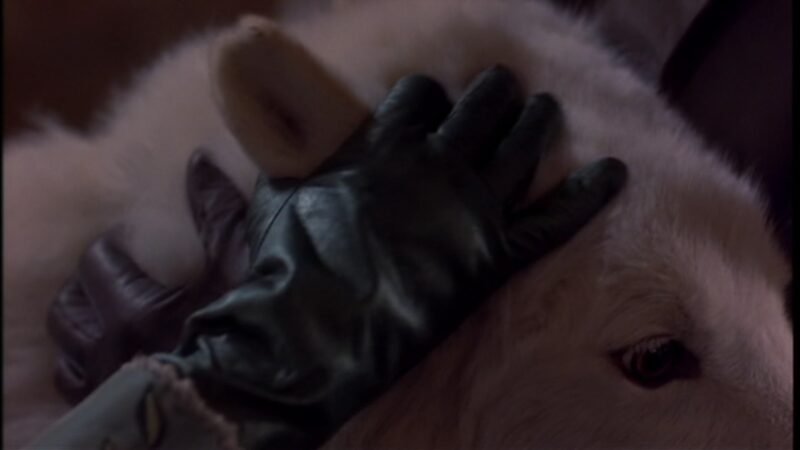
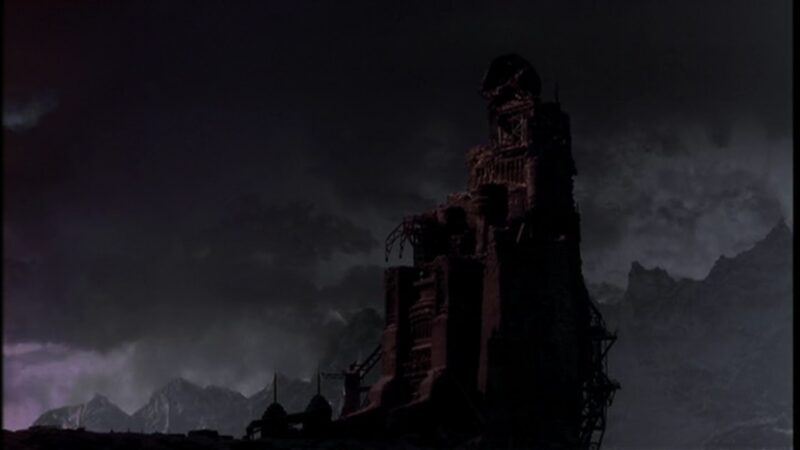


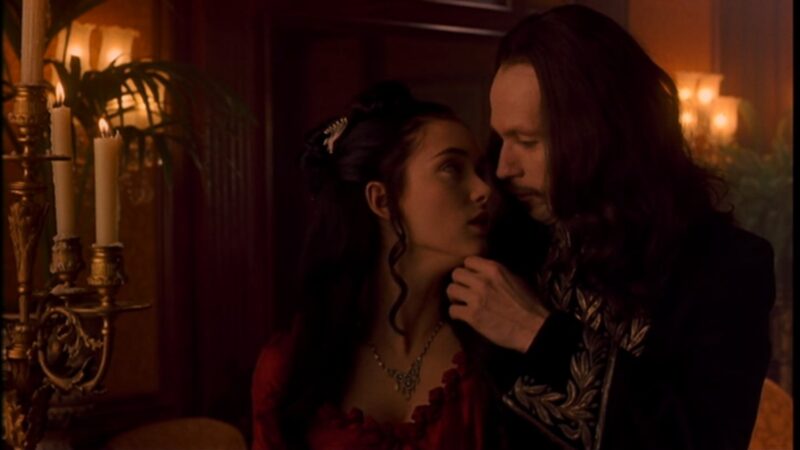
The ‘absinthe’ scene is probably the most memorable one. This echos the ‘white wolf’ scene though now, more direct and physical. Mina’s ‘memory’ of Dracula’s Transylvania begets the question of whether she is in fact the reincarnation of Elisabeta, or is this a result of the drinking of the ‘green fairy’, or perhaps it is the mysterious ‘presence’ of Dracula himself?
This encounter becomes the candlelit dancing scene interwoven with Jonathan’s escape from Dracula’s castle, resulting in Mina sailing for Europe to be married and Dracula’s profound despairing sorrow which descends into vengeance.

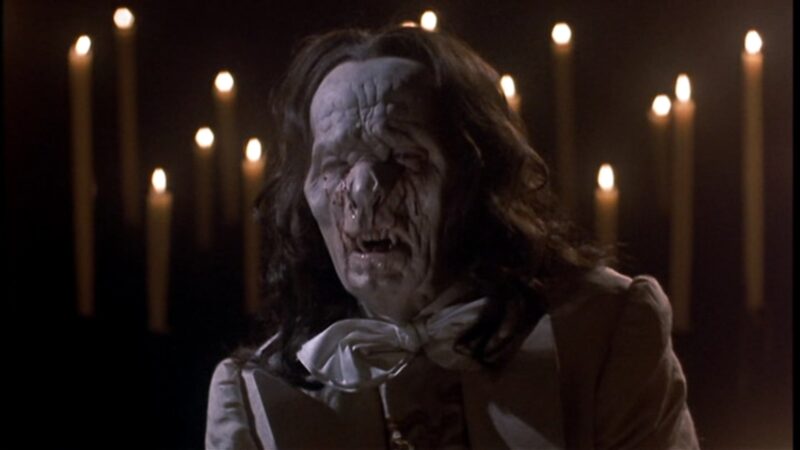
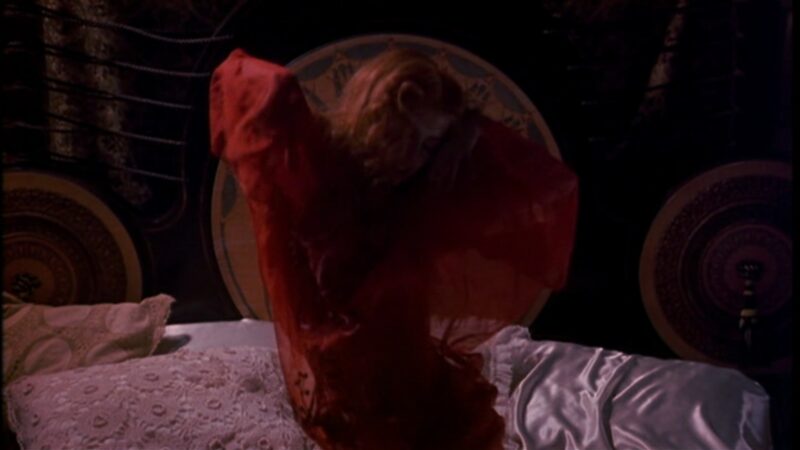
Lucy’s childish and flippant regard toward sex and intimacy becomes a tangible reality as a vengeful Dracula, now spurned by Mina, summons her to obey as he did the white wolf. The intense desire flowing through her veins will become the curse of bloodlust that will not only be her consummation—concomitant with the wedding of Jonathan and Mina—but moreover her inevitable demise by the very hands of those she vainly purported to love.
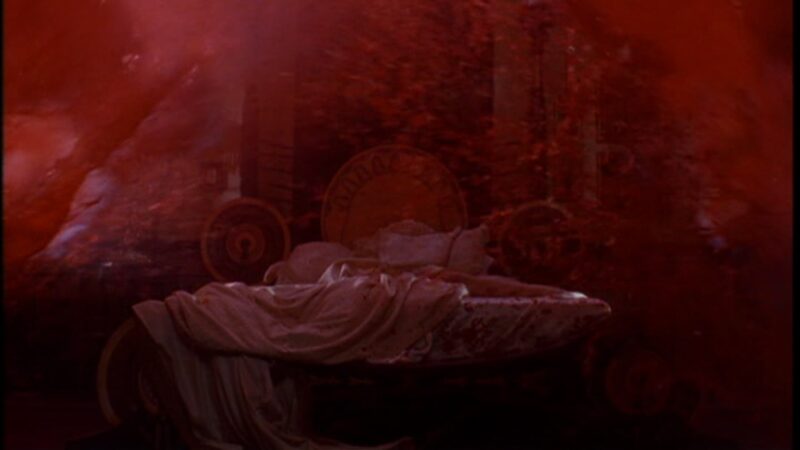

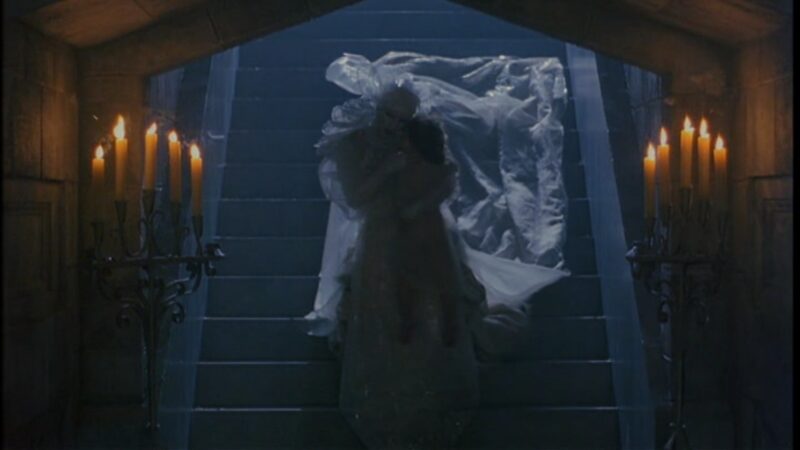



Madness reigns as the predator is now the hunted. Carfax Abbey, Dracula’s one sanctuary, is raided and defiled by Van Helsing, Harper, and Lucy’s three former suitors; all but Van Helsing wreak vengeance for the ones they love, for he seeks to destroy Dracula as he believes him to be the sole carrier of a dreadful virulent disease of the blood.

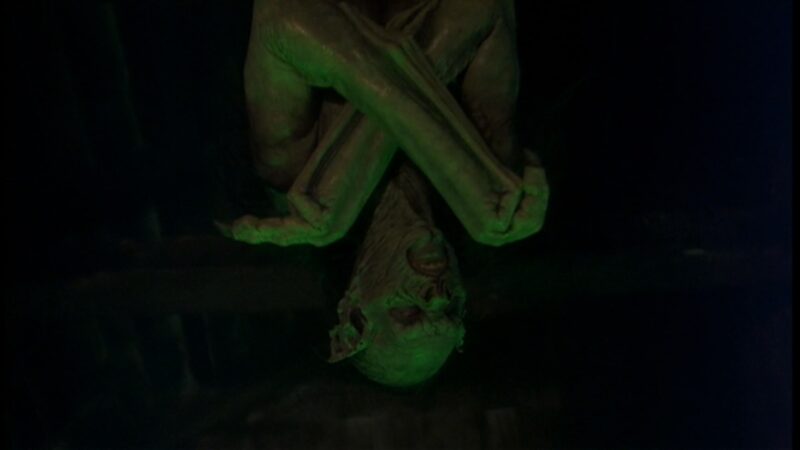
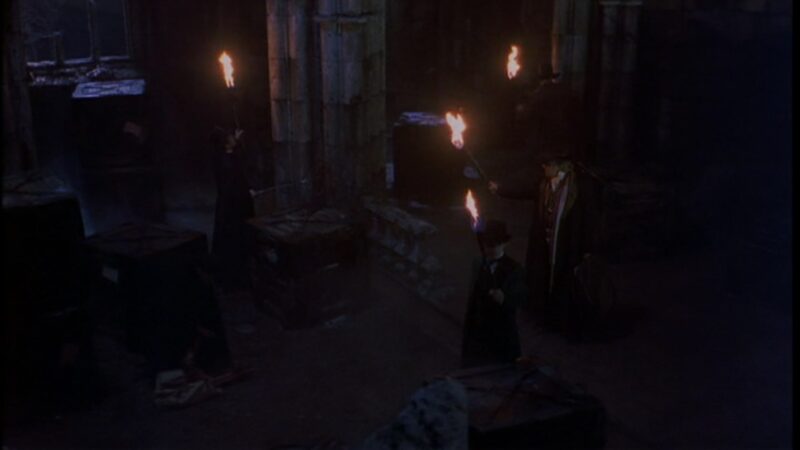
Fleeing the abbey, Dracula kills Renfield for warning Mina then seeks her out to conclude her transformation. Mina wants to be with Dracula at first and though his confession of being the ‘souless monster, Dracula’ that men would kill and of turning Lucy enrages Mina, she remains in love with him; wanting to be what he is, see what he sees, and love what he loves. He warns her that she must “…die to your breathing life…” but, Mina insists that “You are my love… and my life, always.”


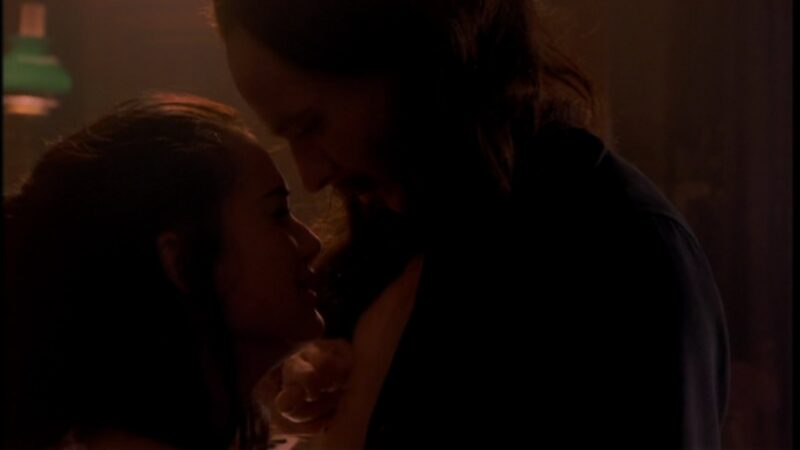

Dracula capitulates, “Then, I give you life eternal. Everlasting love. The power of the storm. And the beasts of the earth. Walk with me to be my loving wife, forever.” He bites her, then offers his blood only to halt her. Again, this struggle between his human and preternatural natures emerges as he loves her too much to condemn her to his eternal fate but, Mina pleads for him to “Take me away from all this death.” Dracula then gives himself—and his blood—to her.
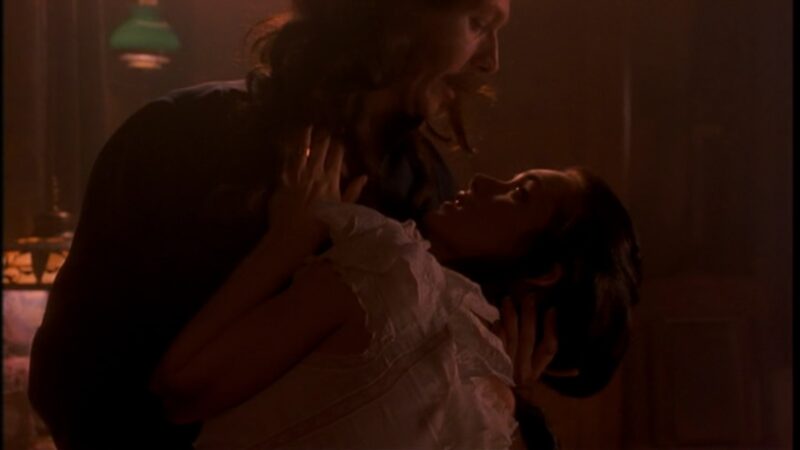
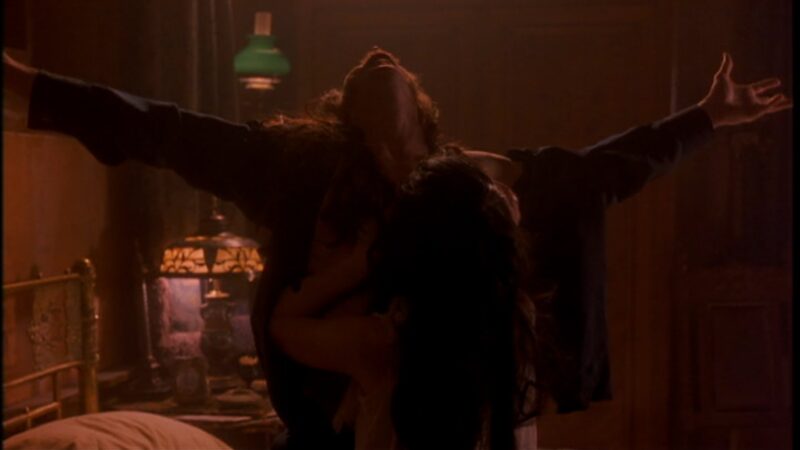
The climax of this blood-communion is interrupted by Dracula’s hunters, though Mina has partaken of Dracula’s blood and is now conjoined with him, knowing each other’s thoughts and feelings, dreams and desires. In attacking Dracula, some of his preternatural powers are revealed. He fears not the Christian cross, bullets cannot hurt him, and he can transform into animals—such as the rats he flees the asylum office as.
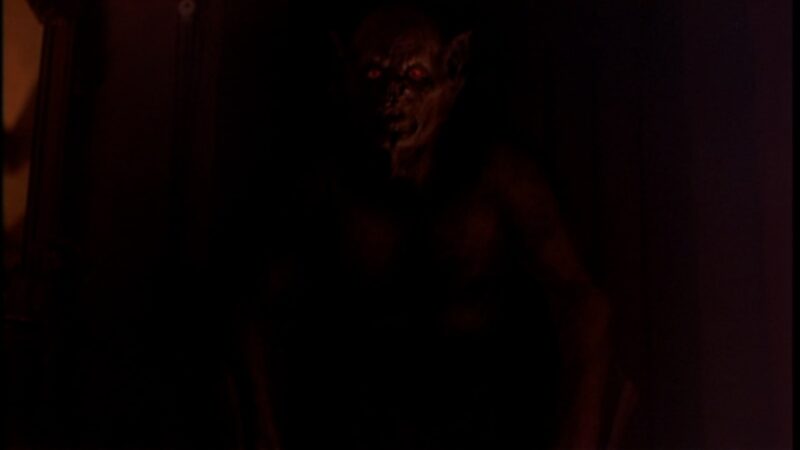
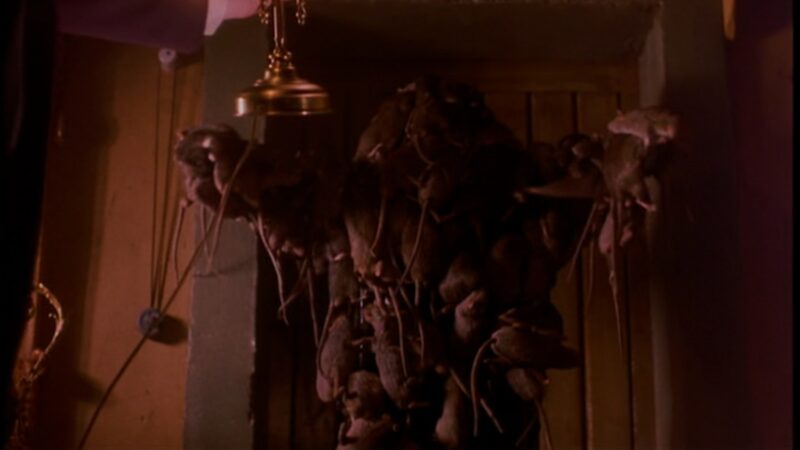
The pursuit, which culminates in the jagged Transylvanian mountains, serves to illuminate Mina’s increasing devotion to Dracula and her acquired powers, such as summoning the storm clouds that obscure the sun so that Dracula may burst forth from the confining crate he has been traveling within.
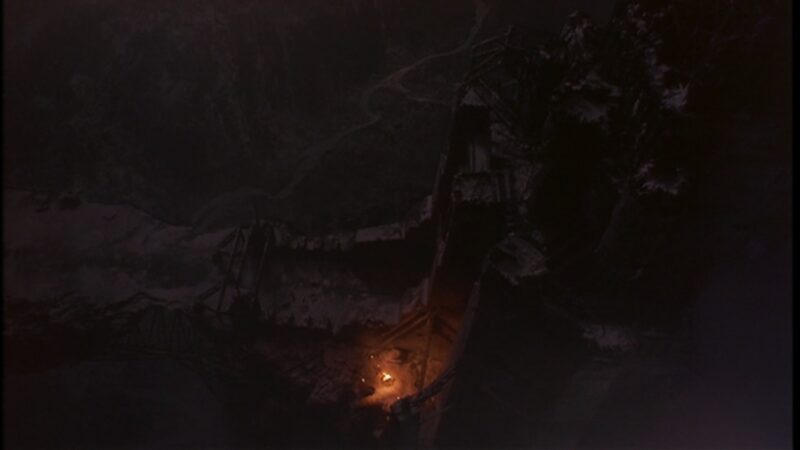
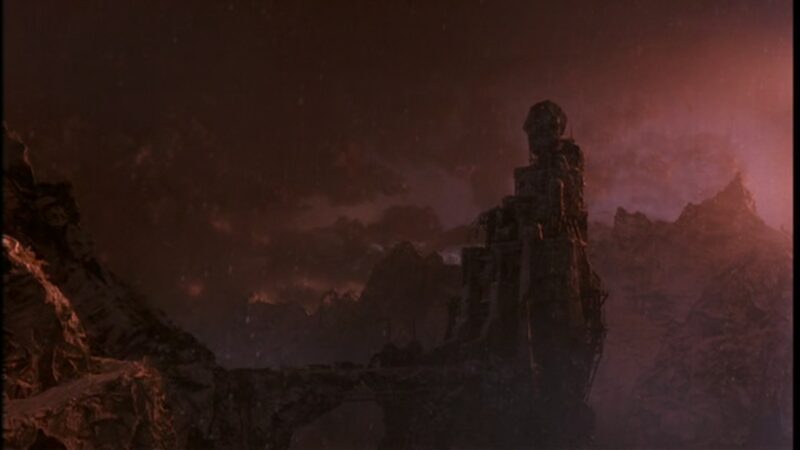
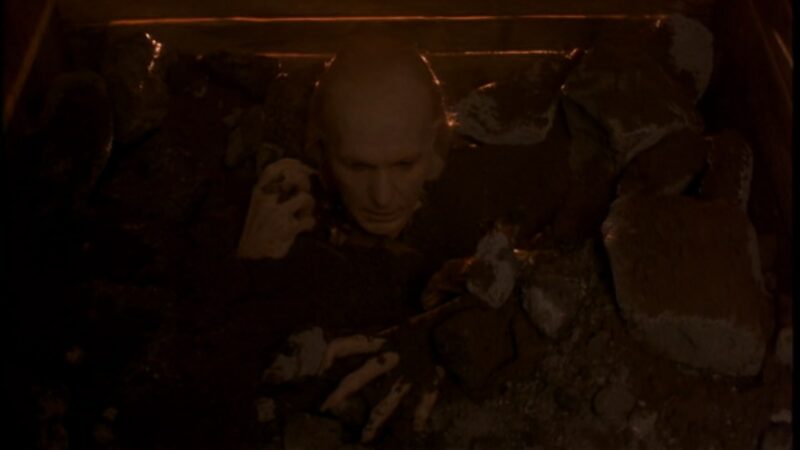
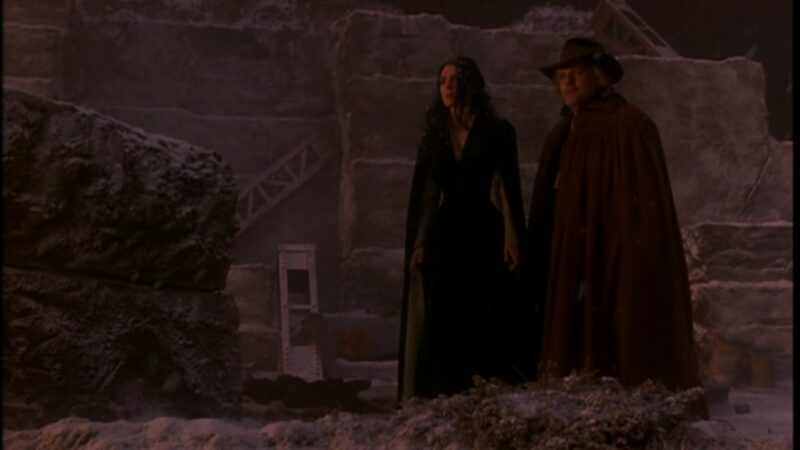
As Dracula emerges from the wooden crate, Harper, who has sliced through the crate’s bindings, slashes his throat. Dracula staggers backward from the attack toward the steps of his castle. Quincy, wounded by a sword thrust into his back, drives his Bowie knife into Dracula’s heart—the mortal wound. As Quincy lay dying, Mina, rifle in one hand, leads Dracula through the castle doors.

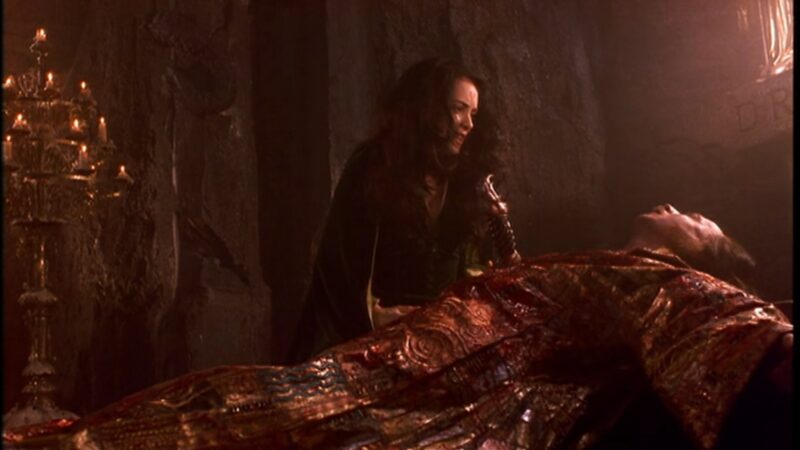
Collapsing on the alter steps and pleading for Mina to “…let it finish”, Dracula reverts to his human countenance before his renunciation’s transformation as the preternatural essence seeps slowly from him. To honour Vlad’s request to “Give me peace”, Mina—in the final act of a love stronger than death—plunges the knife through his chest, kisses him, then withdraws the knife and severs his head from his body.

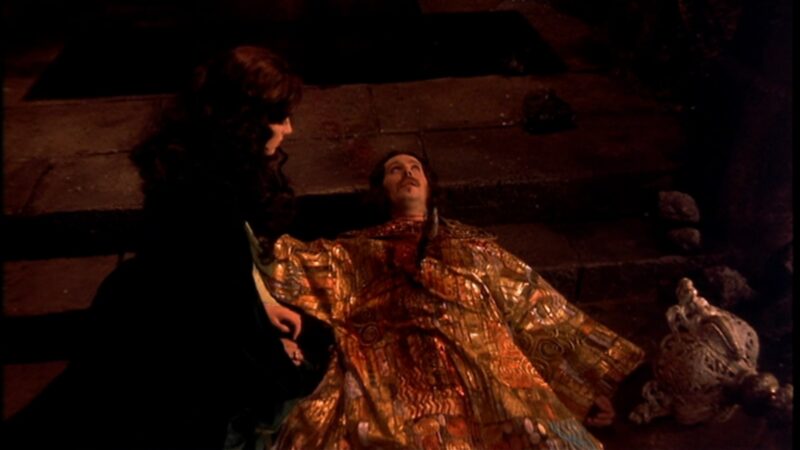
The question remains… is Mina the reincarnation of Vlad’s beloved Elisabeta? Did she return to join him in his self-imposed exile? Or… was her sole purpose to release Vlad—the only soul she cherished—from his tortured agony? We may never know, for this tale of Death and Loss and Eternal Love began and ended…
…with a farewell kiss.

:: Love Song For A Vampire : Annie Lennox ::
Year: 1992
Country: UK, USA
Director: Francis Ford Coppola
Writers: Bram Stoker (novel), James V. Hart (screenplay)
Starring: Gary Oldman, Winona Ryder, Anthony Hopkins, Keanu Reeves, Richard E. Grant, Tom Waits
IMDb Entry 🡕